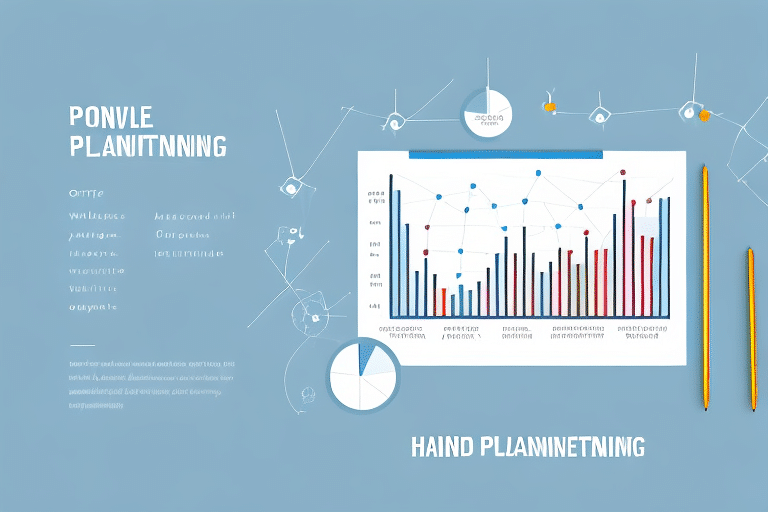The Benefits of Demand Planning for Your Business
As a business owner, staying ahead of the competition is essential. One of the most effective strategies to achieve this is by implementing robust demand planning. This approach enables you to anticipate customer needs, respond dynamically to changes in demand, and optimize your supply chain to ensure product availability aligns with customer expectations.
Understanding Demand Planning
What is Demand Planning?
Demand planning is the systematic process of forecasting customer demand for products or services. It involves analyzing historical sales data, market trends, and consumer behavior to predict future demand accurately. Effective demand planning helps businesses maintain optimal inventory levels, reduce stockouts and overstocks, and ensure timely delivery to customers.
Importance of Demand Planning
Accurate demand planning empowers businesses to make informed decisions regarding production and procurement. By forecasting demand precisely, companies can adjust their production schedules and order the right amount of raw materials, minimizing waste and reducing costs. Additionally, demand planning identifies emerging trends and customer needs, paving the way for new growth opportunities.
According to a Forrester report, companies with advanced demand planning capabilities experience a 20% reduction in inventory costs and a 15% improvement in service levels.
Cost and Time Savings through Demand Planning
Reducing Inventory Costs
By accurately forecasting demand, businesses can avoid the financial burden of overstocking or understocking products. This optimization leads to significant savings in inventory carrying costs, including storage, insurance, and capital tied up in excess inventory.
Enhancing Operational Efficiency
Effective demand planning streamlines operations by aligning production schedules with anticipated demand. This alignment reduces the need for expedited shipping and minimizes the costs associated with last-minute adjustments.
Improving Customer Satisfaction
Ensuring the right products are available when customers need them enhances satisfaction and fosters loyalty. Consistent product availability builds a reliable reputation, encouraging repeat business and positive word-of-mouth referrals.
Demand Planning in Supply Chain Management
Optimizing the Supply Chain
Demand planning plays a pivotal role in supply chain management by allowing businesses to anticipate demand and adjust their supply chain operations accordingly. This proactive approach ensures efficient inventory management, timely production, and reliable delivery schedules.
Strengthening Supplier Relationships
Accurate demand forecasts improve collaboration with suppliers, leading to better communication and more reliable supply chains. Strong supplier partnerships reduce lead times and enhance the ability to meet fluctuating demand.
Research from the McKinsey & Company highlights that integrated demand planning can enhance supply chain responsiveness by up to 30%.
Implementing a Successful Demand Planning Strategy
Data Collection and Analysis
Gather comprehensive data on customer behavior, market trends, and sales history through surveys, market research, and sales data analysis. Utilizing advanced analytics tools can enhance the accuracy of your demand forecasts.
Cross-Departmental Collaboration
Involve key departments such as sales, marketing, and supply chain management in the demand planning process. Clear communication and collaboration ensure that all relevant factors are considered, leading to more accurate forecasts.
Continuous Review and Adjustment
Regularly review and adjust your demand planning strategy based on new data and evolving market conditions. Staying informed about industry developments and consumer behavior changes ensures your demand forecasts remain relevant and accurate.
Implementing a flexible demand planning process allows businesses to adapt swiftly to unexpected market shifts, maintaining operational efficiency and customer satisfaction.
The Role of Technology in Demand Planning
Advanced Demand Planning Software
Utilizing specialized demand planning software can automate data collection, forecasting, and reporting processes. These tools provide deeper insights into customer behavior, enable more accurate predictions, and offer detailed analytics to refine your demand planning strategy.
Leveraging Machine Learning and AI
Incorporating machine learning algorithms enhances demand forecasting accuracy by identifying complex patterns and trends within large datasets. AI-driven demand planning tools can adapt to changing market conditions in real-time, providing businesses with a competitive edge.
A study by Gartner found that AI-enhanced demand planning can increase forecast accuracy by up to 25% compared to traditional methods.
Best Practices for Effective Demand Planning
Integrate Historical Data
Utilize historical sales data to identify trends and seasonal patterns. This integration forms the foundation for accurate demand forecasts, enabling businesses to anticipate future demand based on past performance.
Consider External Factors
Account for external influences such as economic shifts, weather patterns, and political events that may impact demand. Incorporating these factors into your demand planning process enhances forecast accuracy.
Collaborate with Stakeholders
Engage with customers, suppliers, and internal teams to gather insights and refine demand forecasts. Collaborative efforts ensure a comprehensive understanding of market dynamics and customer needs.
Monitor and Adjust
Continuously monitor demand planning metrics and adjust strategies as needed. Regular assessment allows businesses to identify areas for improvement and respond proactively to market changes.
Measuring the Success of Demand Planning
Key Performance Indicators (KPIs)
- Forecast Accuracy: Measures the precision of demand forecasts compared to actual sales.
- Inventory Turnover: Indicates how frequently inventory is sold and replaced over a specific period.
- Service Level: Assesses the ability to meet customer demand without stockouts.
- Stockout Rate: Tracks the frequency of inventory shortages affecting customer orders.
Regularly tracking these KPIs helps businesses evaluate the effectiveness of their demand planning strategies and make informed adjustments to enhance performance.
Overcoming Challenges in Demand Planning
Data Quality Issues
Ensuring high-quality, accurate data is crucial for effective demand planning. Implement robust data collection and validation processes to minimize errors and enhance forecast reliability.
Lack of Cross-Departmental Collaboration
Promote collaboration across various departments to ensure comprehensive input into the demand planning process. Encouraging open communication and cooperation leads to more accurate and holistic demand forecasts.
Adapting to Market Changes
Develop flexible demand planning strategies that can swiftly adapt to market fluctuations. Incorporating real-time data and analytics allows businesses to respond promptly to unexpected changes in demand.
By addressing these challenges proactively, businesses can strengthen their demand planning processes and achieve greater operational efficiency.
Conclusion
Effective demand planning is essential for businesses aiming to optimize their supply chains, reduce costs, and enhance customer satisfaction. By leveraging advanced technologies, fostering cross-departmental collaboration, and adhering to best practices, companies can accurately forecast demand, respond to market changes, and drive long-term success.
Investing in robust demand planning strategies not only improves operational efficiency but also builds a resilient foundation for sustained growth in a competitive marketplace.




















